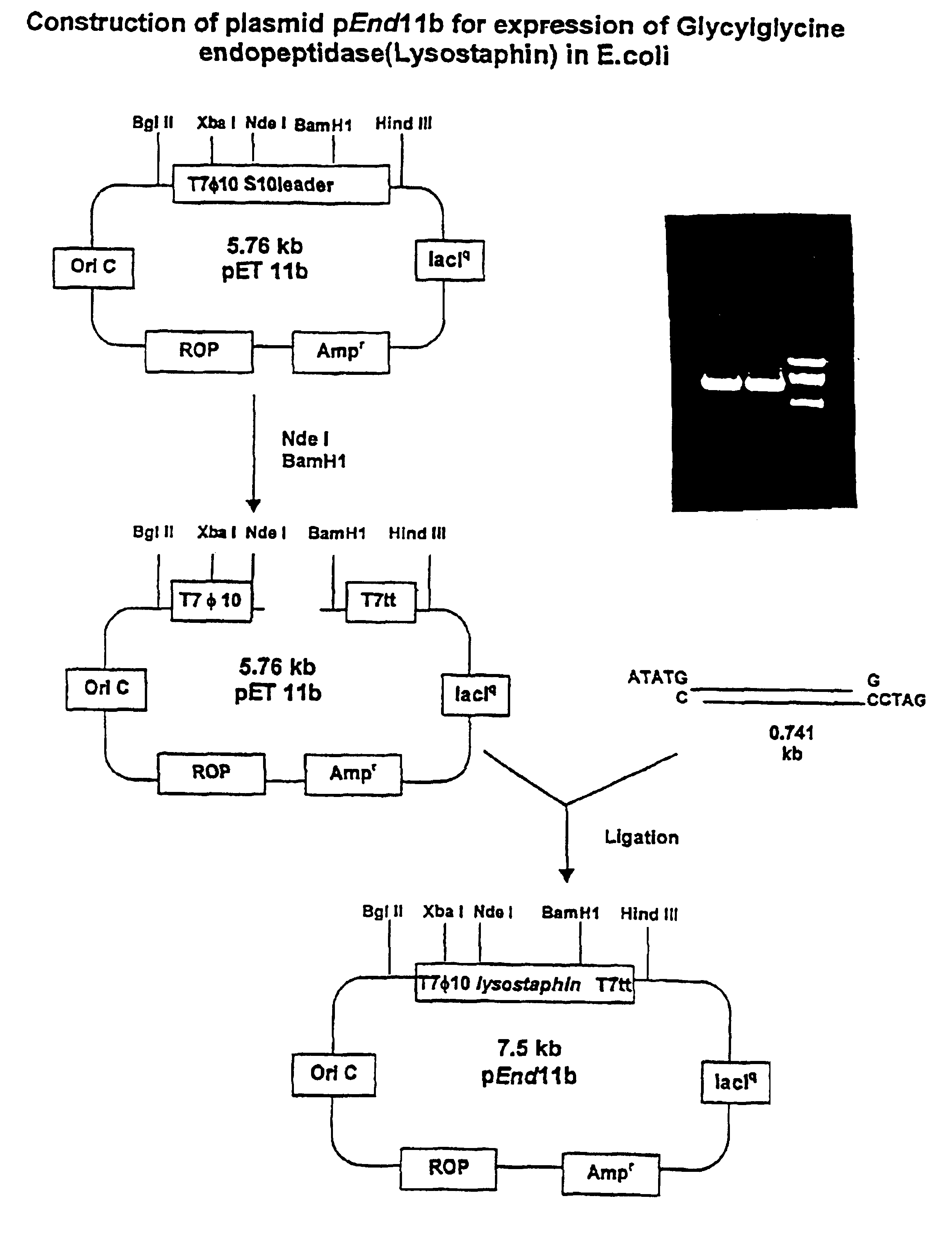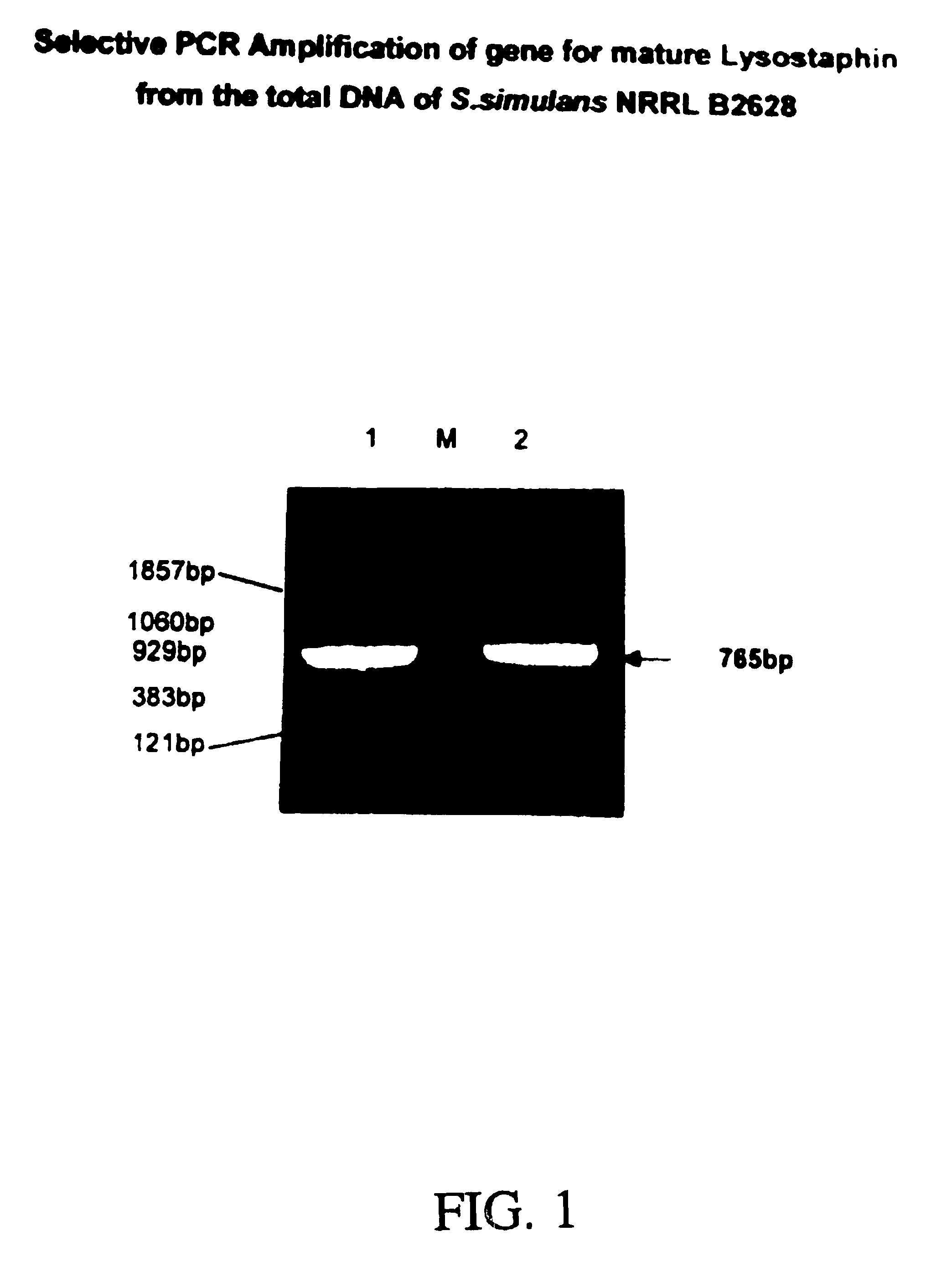Expression of recombinant mature lysostaphin
a technology of lysostaphin and lysostaphin, which is applied in the direction of peptides/proteins, antibacterial agents, peptides, etc., can solve the problems of /i>infections remaining elusive, the tendency to relapse, and the enormous amount of misery and economic loss of mankind
- Summary
- Abstract
- Description
- Claims
- Application Information
AI Technical Summary
Benefits of technology
Problems solved by technology
Method used
Image
Examples
examples
[0038]The following Examples are included solely to aid in a more complete understanding of the invention described and claimed herein. The Examples do not limit the scope of the claimed invention in any fashion.
Construction of Recombinant Expression Vector:
[0039]Referring now to FIG. 2, the secretion signal peptide and the tandem repeats representing the propeptide were replaced by an ATG initiation codon accompanied by creation of EcoRI restriction site at the 5′ end, and a BamHI restriction site immediately following the termination codon of the structural gene for lysostaphin by PCR-mediated site-directed mutagenesis using the primers:[0040]5′-ACTGAATTCCATATGGCTGCAACACATGAACATTCAGCAC-3′ (SEQ. ID. NO: 1) (underlined is Nde I restriction site); and[0041]5′-CAGATCTGGATCCTCACTTTATAGTTCCCCAAAGAACAC-3′ (SEQ. ID. NO: 2) (underlined is BamH1 restriction site).
[0042]The modified gene was selectively amplified from the plasmid pRJ5 (Recsei et al, supra, ATCC 67079) by PCR in a standard re...
PUM
| Property | Measurement | Unit |
|---|---|---|
| molecular weight | aaaaa | aaaaa |
| pH | aaaaa | aaaaa |
| pH | aaaaa | aaaaa |
Abstract
Description
Claims
Application Information
 Login to View More
Login to View More - R&D
- Intellectual Property
- Life Sciences
- Materials
- Tech Scout
- Unparalleled Data Quality
- Higher Quality Content
- 60% Fewer Hallucinations
Browse by: Latest US Patents, China's latest patents, Technical Efficacy Thesaurus, Application Domain, Technology Topic, Popular Technical Reports.
© 2025 PatSnap. All rights reserved.Legal|Privacy policy|Modern Slavery Act Transparency Statement|Sitemap|About US| Contact US: help@patsnap.com



